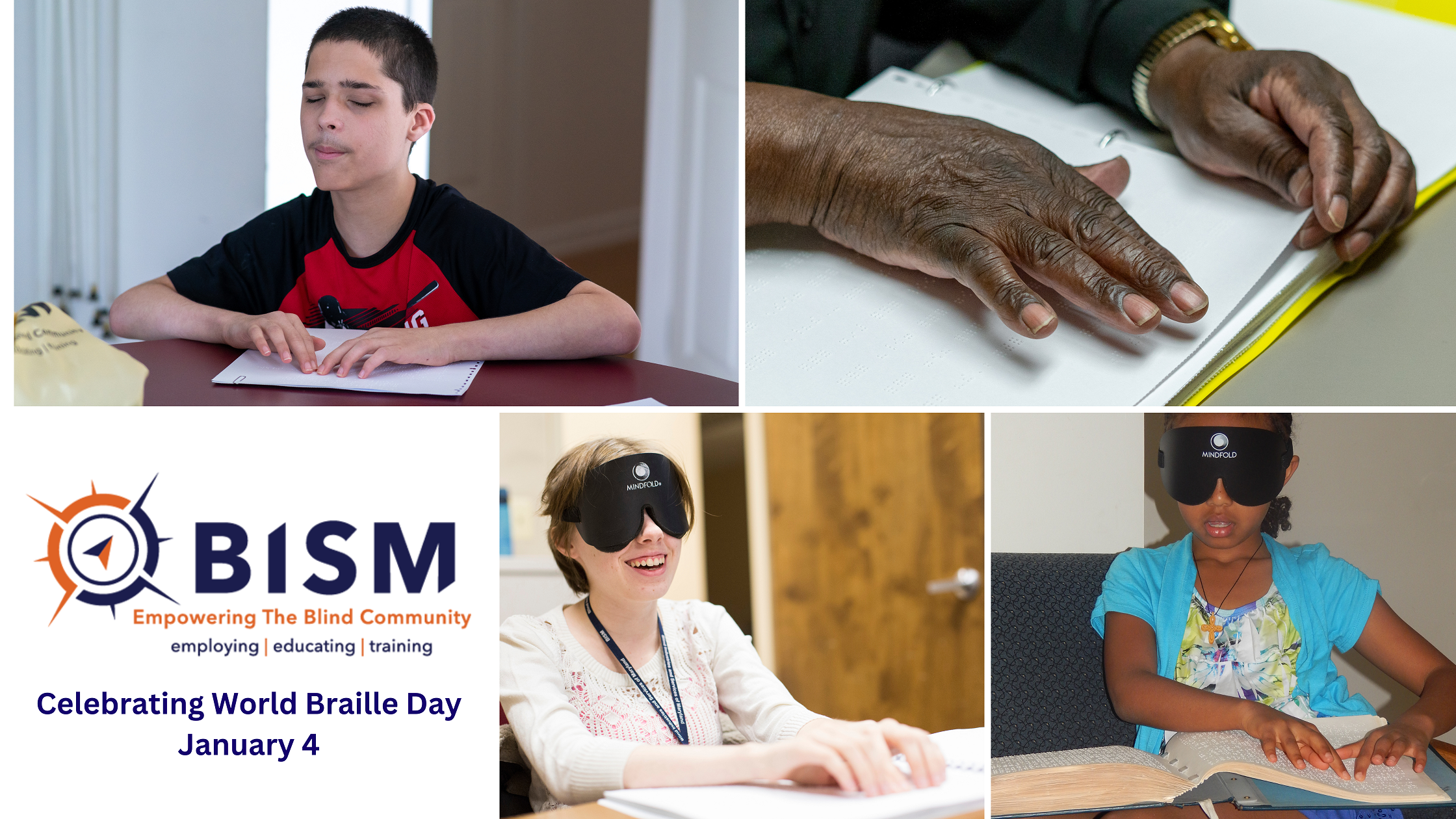January is not only about New Years resolutions here at BISM. It holds special significance as we celebrate World Braille Day and National Braille Literacy Month.
World Braille Day, on January 4th commemorates the birth of Louis Braille, the inventor of the code that revolutionized reading and writing for the blind. Born in 1809 in France, Braille lost his sight at age three after an accident in his father’s workshop. At 15, inspired by a military “night writing” code, he developed the six-dot system that would become modern Braille.
Braille consists of six raised dots arranged in cells. It was a great improvement over previous systems such as raised print letters which made for much slower reading. Braille opened unprecedented access to education and employment for blind people. Louis Braille did not get to see how great an impact his invention would make, as he died in 1852.
Today, World Braille Day honors Louis Braille’s legacy, while National Braille Literacy Month serves as an annual opportunity to raise awareness about the critical importance of Braille literacy and advocate for access to Braille education and materials.
Braille serves as a foundation for both personal and professional independence. In the workplace, it enables individuals to access documents, write reports, and take notes during meetings. At home, Braille labeling systems help with everyday tasks, from operating appliances to organizing medications and cooking ingredients. The ability to navigate daily life independently is invaluable. The importance of Braille extends far beyond basic functionality. Just as traditional reading and writing are fundamental to literacy for sighted individuals, Braille provides the pathway to literacy for those who are blind. It allows students to learn alongside their sighted peers and achieve academic success.
The importance of Braille is best understood through the experiences of those who use it daily. Take Jen Bopp, who began her journey with Braille at age 26 through BISM’s CORE program. “Braille makes me independent,” she says. “I don’t have to have people come in and help.” A long-time Braille Instructor at BISM, her commitment to Braille literacy runs deep – she expects her students to master the complete code and reach their full potential. “Whether it’s basic literacy or advanced certification in Unified English Braille (UEB), my goal is for every student to gain the skills they need to be truly independent,” she explains. Her enthusiasm for teaching continues to grow as she begins working for the senior program.
BISM plays a crucial role in continuing Louis Braille’s legacy through comprehensive, Braille instruction. Using a textbook developed by another BISM Instructor, Danielle Earl, BISM’s students’ progress through lessons using slates and Perkins Braillers. Students must complete writing drills. Whether it is learning letters or responding to a prompt. It all culminates in final projects, from creating Braille menus for restaurants to developing twin vision books. Students are encouraged to aim high, with many going on to master the complete Braille code, pursue advanced certifications in Unified English Braille (UEB), or become certified Braille transcribers.
While screen readers and other assistive technologies have revolutionized access to digital content, Braille literacy remains essential. Without Braille, blind people may struggle with spelling and overall literacy. As we continue through National Braille Literacy Month, we are reminded that Braille is not just a tool for reading and writing, it’s a key that unlocks independence, education, and opportunity for individuals who are blind. The ability to read and write independently, and fully participate in educational and professional settings are not mere conveniences, they are fundamental rights. Through Braille literacy, these rights become reality, continuing what Louis Braille set in motion over two centuries ago.



